Bioscience 1 Assessment 2 (Part B) - Vitamin B12 and Breathing
VerifiedAdded on 2022/10/15
|6
|1275
|18
Homework Assignment
AI Summary
This document presents a completed assignment for Bioscience 1 Assessment 2 (Part B), addressing key concepts in human biology. The assignment begins with a review of feedback from a previous assessment, emphasizing the importance of referencing and paraphrasing in academic writing. Task 2 consists of short-answer questions that delve into the mechanics of pulmonary ventilation in a healthy individual, detailing the roles of the diaphragm, intercostal muscles, and Boyle's law in the processes of inspiration and expiration. The assignment also explores the essential nutrient vitamin B12, including its food sources, functions in the body, consequences of deficiency, and risk factors for deficiency. The solution includes in-text citations and a reference list, demonstrating adherence to academic standards.
1 out of 6
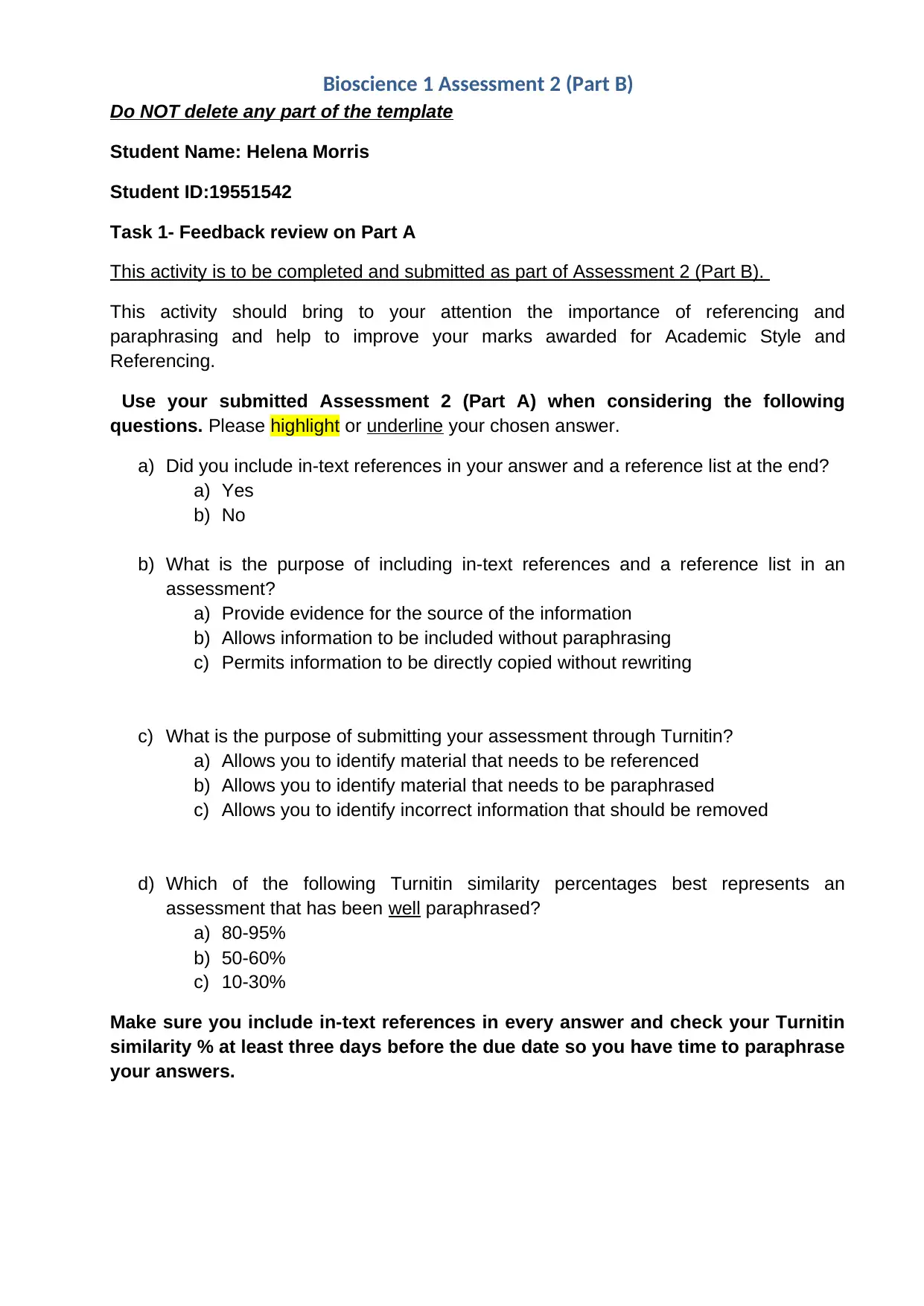
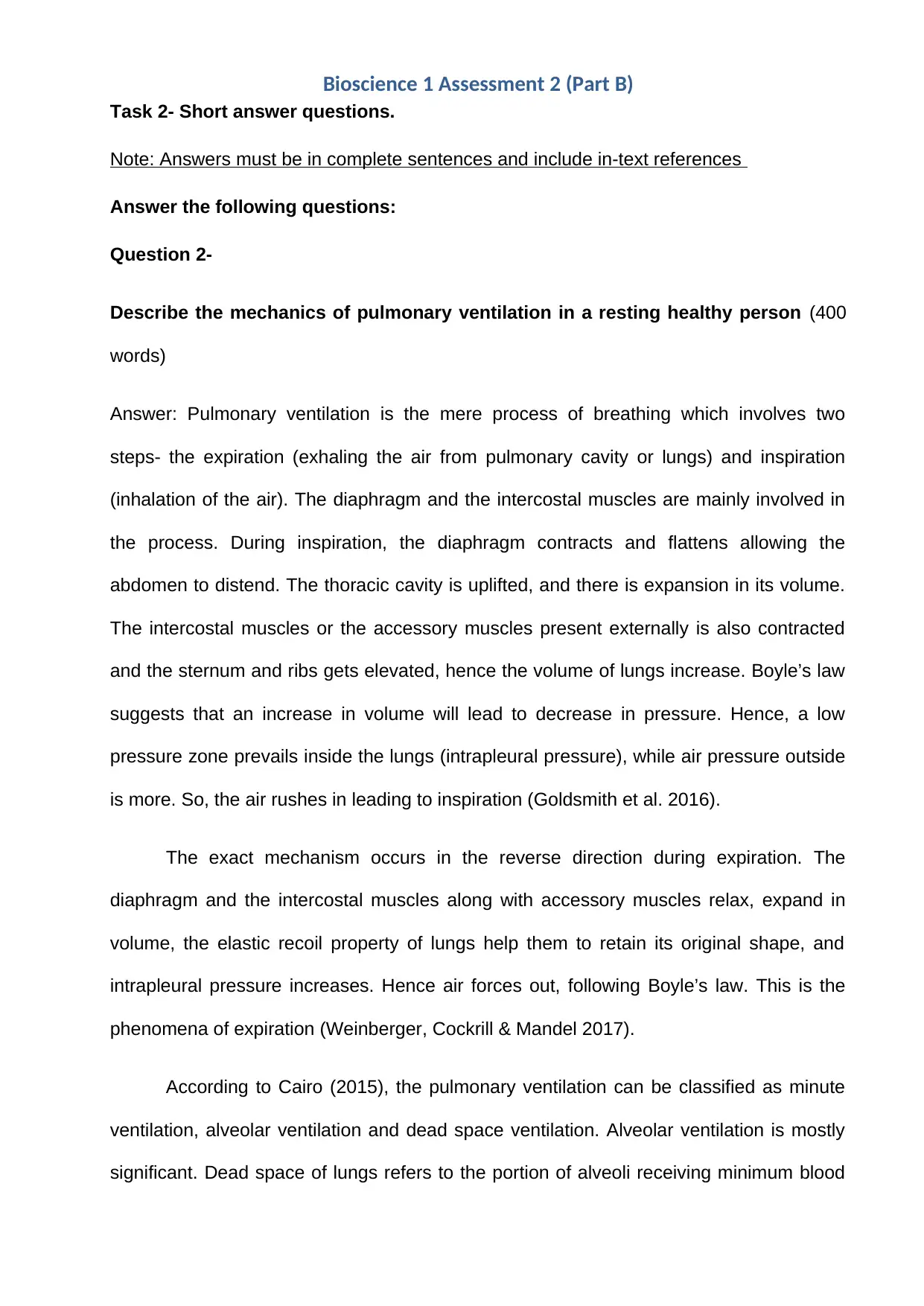
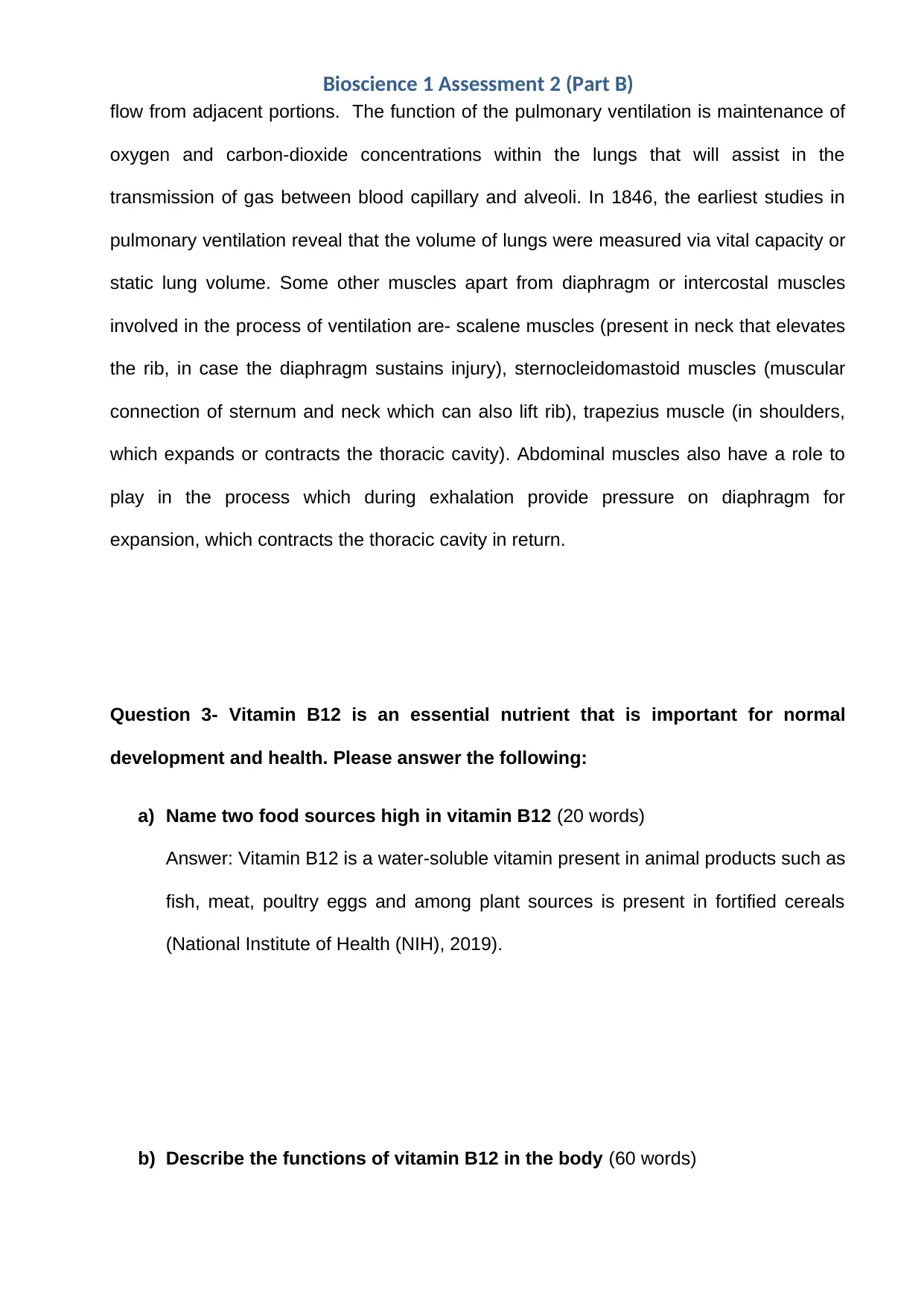
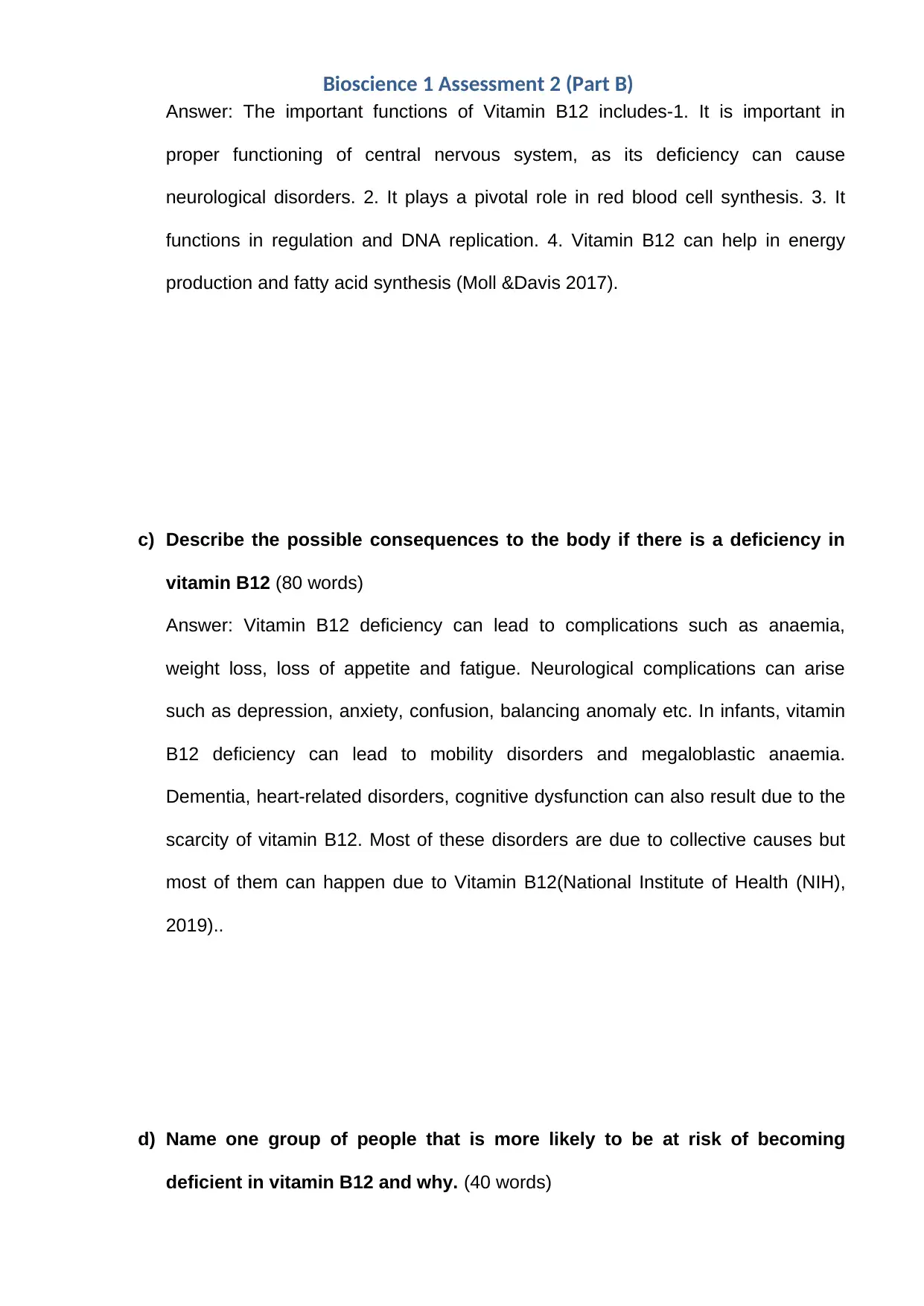
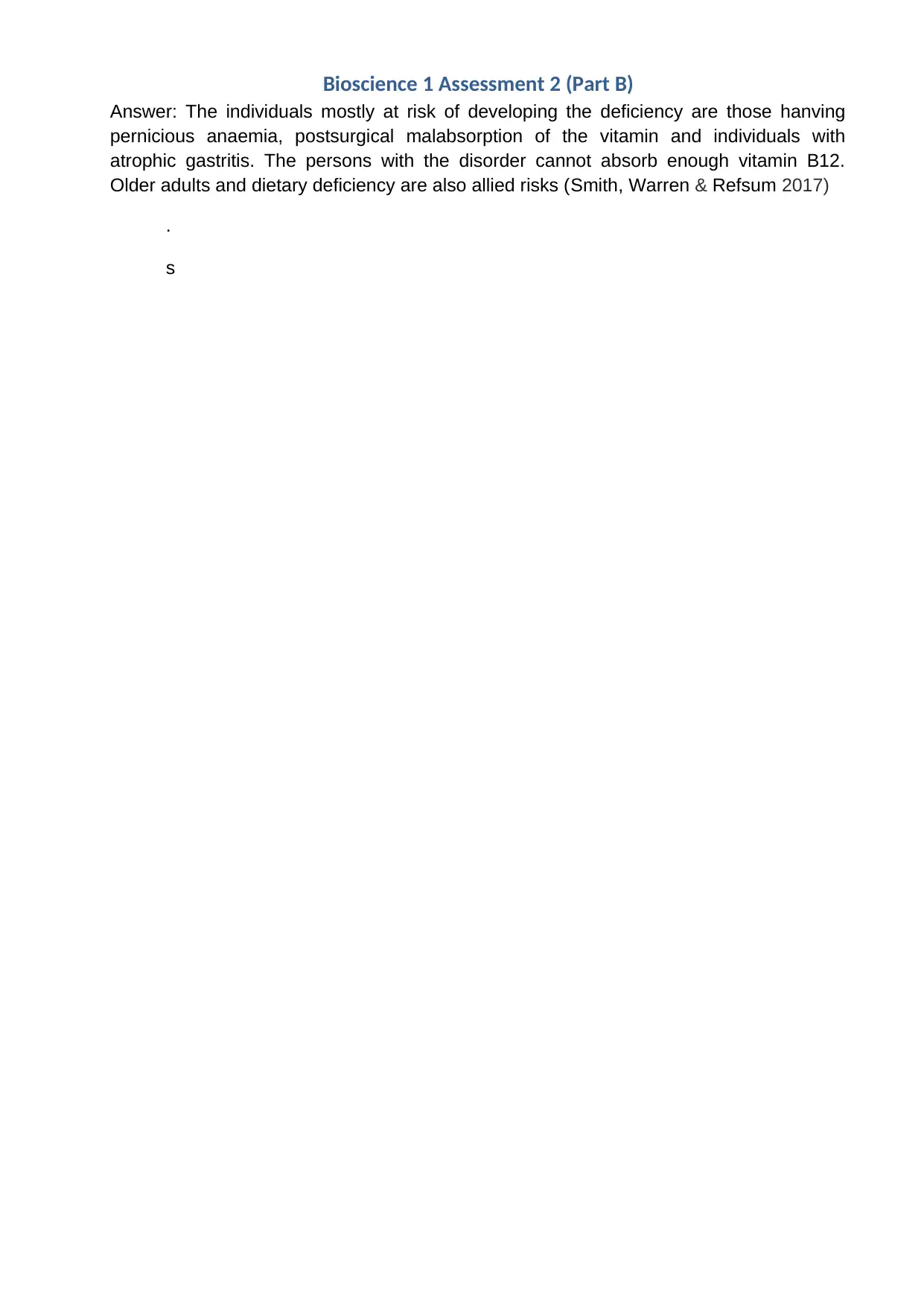
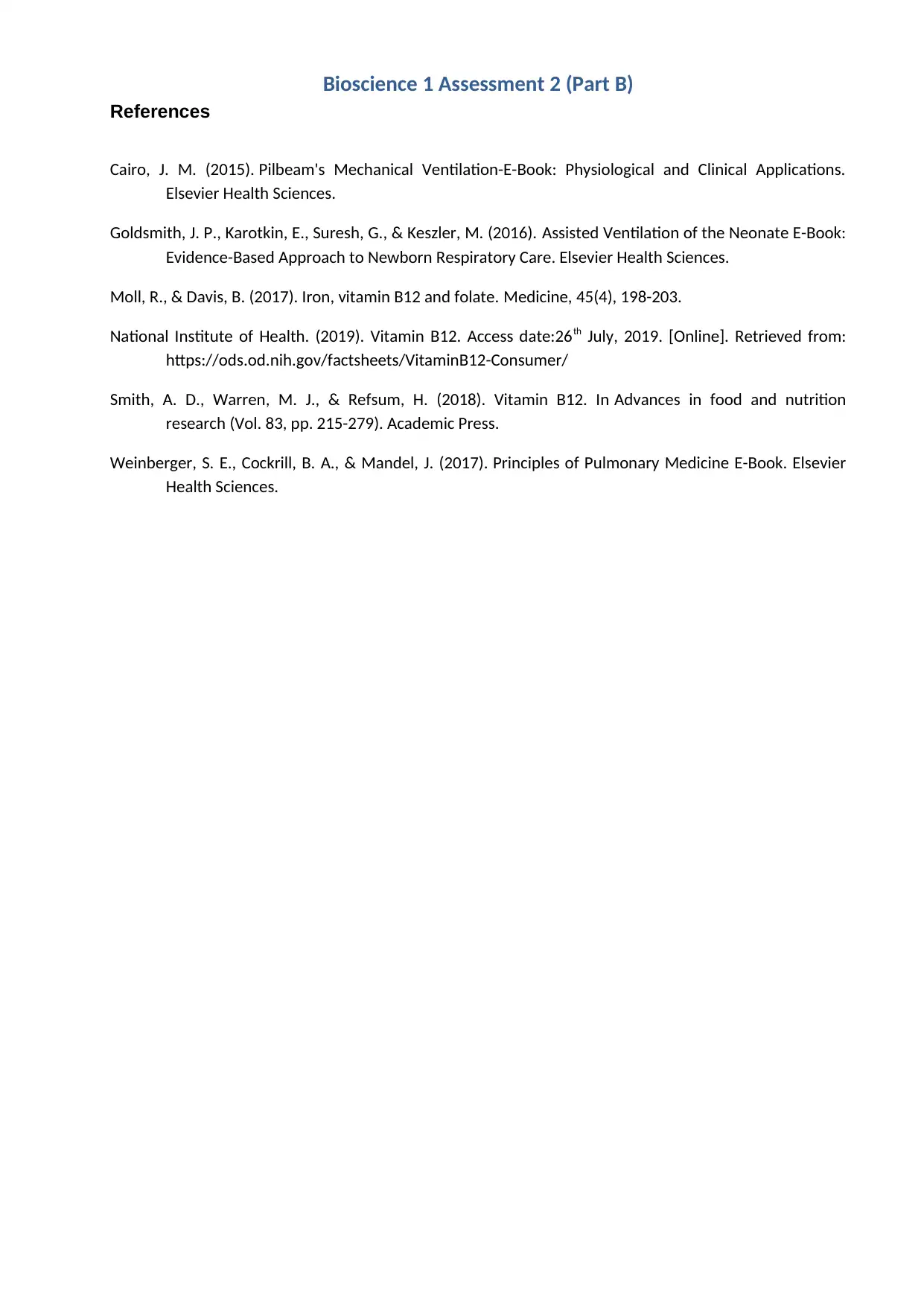






![[object Object]](/_next/static/media/star-bottom.7253800d.svg)